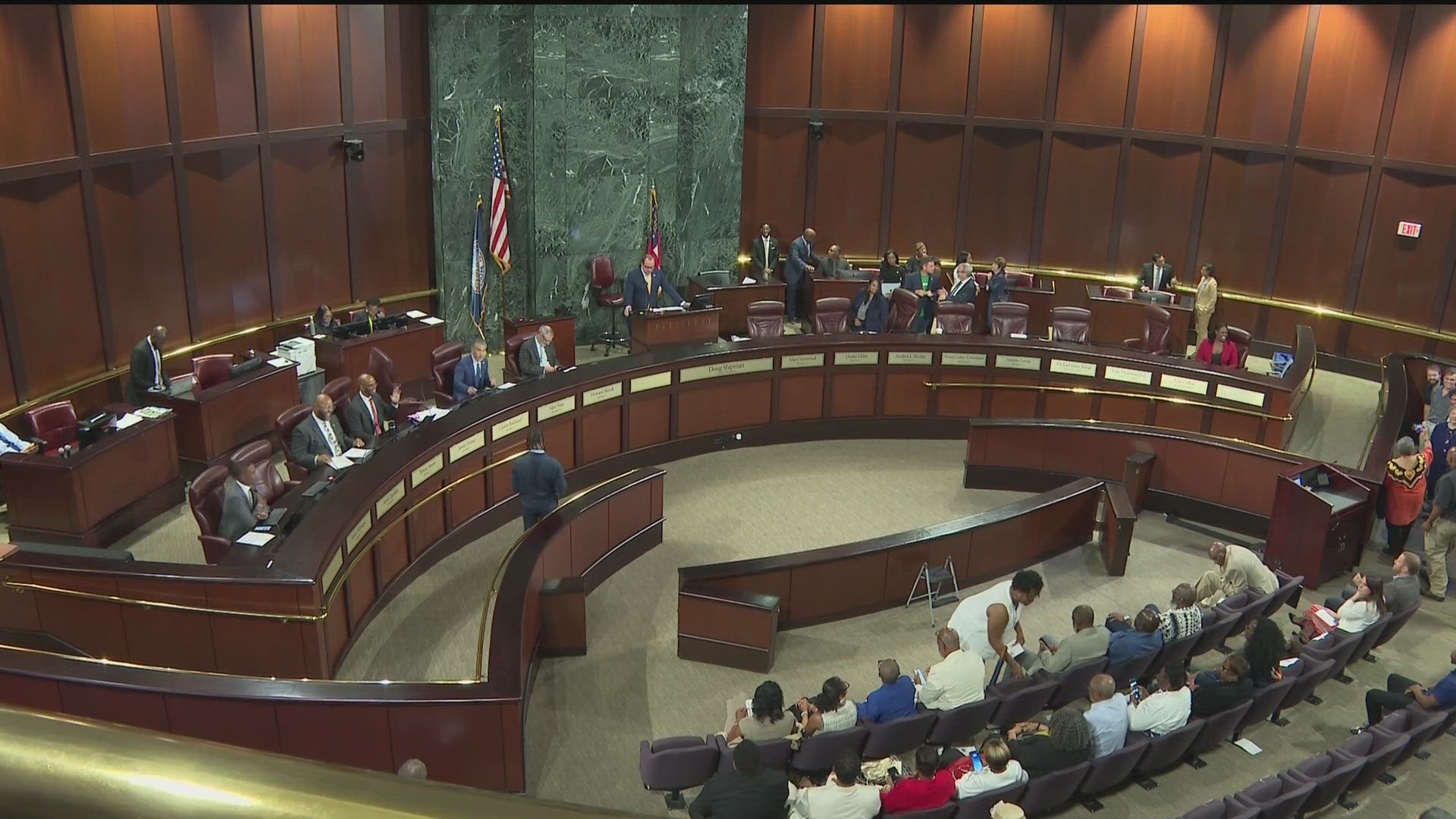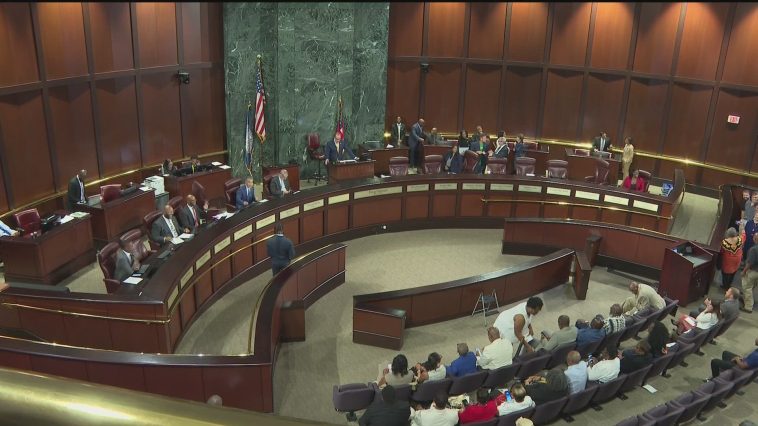
Rebuilding Trust and Revitalizing Edgewood Avenue
In the wake of a tragic mass shooting on Edgewood Avenue in southeast Atlanta, the community has been forced to confront a range of tricky parts and tangled issues that affect not just public safety but also the local economy. As an editorial position, it is crucial to take a closer look at the waking call that has generated a public safety task force aimed at bridging the divide between municipal decision-making and the needs of small business owners.
Nearly a month after that heart-wrenching incident, where one life was lost and ten more were left wounded, city officials have taken super important steps in an effort to forestall future violence. This new Edgewood Corridor Public Safety Task Force comprises diverse voices from the community, including local business owners who are determined to have their opinions heard. Their story is not just about recovering from loss, but about creating a safer and more vibrant environment in one of Atlanta’s cherished cultural hubs.
Impact on Local Businesses and the Community
Local businesses in the area, including beloved establishments like Joystick Gamebar, have witnessed a drop in foot traffic—a stark reminder of the community’s collective anxiety after the traumatic event. As business owners reflect on the nerve-racking twists and turns of recent events, it becomes apparent that safety is just one part of a larger tapestry of concerns that include economic vitality, community trust, and the fine points of municipal responsiveness.
Johnny Martinez, owner of Joystick Gamebar and a contributing member of the new task force, captured the sentiment shared by many in the community: the incident has cast a long shadow over what was once a lively, welcoming, and walkable district. His observation that “there’s absolutely, at least for us, been a significant drop in foot traffic” underscores a problem that extends well beyond immediate public safety. In many ways, it spotlights the delicate balance between promoting commercial activity and ensuring residential security.
Strengthening the Communication Bridge between City Hall and Small Businesses
One important area that deserves concentrated attention is the relationship between small businesses and local government. Martinez has frequently mentioned that there is a disconnect between city hall and the business community—a gap that often results in business owners being unfairly linked to issues arising long after their establishments have closed for the day. This sentiment is echoed in numerous conversation circles where local entrepreneurs express a desire to be a part of decision-making processes affecting their streets.
To address these confused bits and subtle parts of public policy, the task force has begun a dialogue aimed at easing these tensions. The group intends to meet multiple times this year. Its agenda is not solely limited to crime prevention; it also covers enhancements to the street’s infrastructure such as sidewalks, lighting, and community spaces. The aim is to treat the environment as an integrated whole—where safety, livability, and economic opportunity are essential threads in the fabric of daily life.
Key Points on Decision Making: A Bulleted Overview
- Inclusion of small business owners in urban safety planning.
- Collaboration between community stakeholders and city officials.
- Focus on improving both public security and urban infrastructure.
- Commitment to transparent communication channels for future incidents.
- Emphasis on making the street more walkable and visually appealing.
The key benefit of these efforts is to rebuild trust—both among residents and between local businesses and the governing authorities. It is clear that without such targeted community engagement, attempts to restore the vibrancy of Edgewood Avenue may fall short.
Long-Term Strategies: Safety, Infrastructure, and Economic Recovery
Looking ahead, the conversation is turning towards long-term strategies that will have ripple effects on every layer of community life. The overarching objective is to create a robust action plan that not only curbs the likelihood of further violent incidents but also catalyzes the local economy and re-energizes community spirit.
The task force’s strategy revolves around several critical components:
Detailed Steps Towards Community Revitalization
- Enhanced Public Safety Measures – Implementing new initiatives that involve local law enforcement, community watch programs, and innovative crime prevention technologies aimed at tackling those tricky parts of street safety.
- Urban Infrastructure Improvements – Focusing on redesigning sidewalks, optimizing street lighting, and launching beautification projects that work to transform Edgewood Avenue from a tense, on-edge environment into a welcoming and walkable space.
- Business-Centric Urban Planning – Establishing more integrated platforms where small business owners can voice their concerns and collaborate with municipal decision-makers, ensuring that economic recovery is seen as a shared, community-wide achievement.
- Community Engagement Initiatives – Organizing public forums, neighborhood meetings, and interactive workshops to discuss the subtle details of recovery, ensuring that every community member’s voice is heard.
- Transparent Communication Channels – Adopting clear and accessible methods for feedback and continuous dialogue about the progress of safety and economic initiatives.
Each of these layers plays a part in the overall framework for recovery. The combined approach will help to ease the overwhelming fears and complicated pieces that often accompany any significant shift in public policy. Getting these pieces right isn’t just about preventing future tragedies—it’s about setting Edgewood Avenue on a sustainable path for growth and stability.
Lessons from Past Experiences and Similar Urban Areas
History is full of instances when communities have been forced to navigate (or rather, figure a path through) daunting challenges after traumatic events. Similar episodes in other urban centers have highlighted the importance of immediate public response coupled with longer-term planning. In places where city officials worked hand in hand with local businesses, the community managed not only to overcome the immediate safety concerns but also to lay the foundation for lasting economic resilience.
For example, many urban corridors in the nation have successfully transitioned after facing periods of high crime by integrating enhanced public safety initiatives with community-driven economic plans. In these situations, city hall made a deliberate effort to close the gap with local entrepreneurs, and the results speak for themselves—a renewed sense of community pride and a noticeable uptick in local economic activity.
Comparative Analysis: What Works and What Doesn’t
| Approach | Successful Outcomes | Failure Points |
|---|---|---|
| Strong Business-Government Ties |
|
|
| Infrastructure Improvements |
|
|
| Community-Driven Initiatives |
|
|
This table serves as a microcosm for understanding the benefits and challenges public authorities often face when trying to sort out the fine points of urban recovery. Learning from these case studies should inform the current approach on Edgewood Avenue.
Towards a Harmonious Future: The Role of Integrated Urban Policy
One persistent struggle in any urban redevelopment project is that the tiny differences and subtle details can dramatically influence success. The story of Edgewood Avenue is a textbook example of how business, government, and community engagement must coalesce to overcome delicate challenges.
It is not enough merely to react after an incident has occurred. Instead, city officials and local stakeholders must adopt an integrated urban policy that views public safety and economic development as two sides of the same coin. This approach involves ensuring that when unforeseen and nerve-racking events take place, there is already a roadmap for recovery laid out—a roadmap created in close cooperation with those who know the streets best: the local business owners and everyday residents.
Critical Elements for an Integrated Strategy
- Preventative Measures: Establish robust systems for early detection and rapid response, ensuring that every possible angle—from law enforcement to community alerts—is covered.
- Economic Sensitivity: Recognize the nerve-wracking impact that sudden crises can have on local economies, and work to shield small businesses from these effects through direct support and community marketing initiatives.
- Collaborative Policy-Making: Involve local voices in every step of policy formation, from initial brainstorming sessions to the final rollout of public safety measures.
- Accountability and Transparency: Maintain open lines of communication with affected communities, ensuring that progress is measured and shared openly.
By focusing on these aspects, the Edgewood Corridor Public Safety Task Force can become a model for how communities should figure a path through the tangled issues of urban management, especially in the wake of traumatic events.
The Immediate Aftermath: Public Sentiment and the Need for a New Beginning
In the immediate days and weeks following the shooting, the community was left reeling—questioning the security of their once-thriving streets and doubting whether such a tragedy could ever be fully averted. Local sentiment was loaded with a mix of grief and determination, with many residents and business owners vocally demanding that nothing short of major change will suffice.
For many, the swift formation of the task force provided a beacon of hope in an otherwise grim situation. It signaled that the city was not willing to let the past dictate the future. Instead, the focus was on transforming Edgewood Avenue into an area where economic opportunities flourish and every person can feel secure. It’s a challenging but off-putting task—questioning old paradigms and rebuilding on shaky ground—but it is one that holds the promise of a better, more interconnected future.
Community Discussion: The Value of Open Forums and Dialogue
At the heart of these efforts is the recognition that change can only happen when there’s a forum for meaningful dialogue. The task force’s inclusive approach is designed to facilitate open discussion, ensuring that not only are the tangible issues like crime and sidewalk conditions addressed, but also that the emotional and psychological scars left by the shooting are healed over time.
For residents and business owners alike, forums that encourage conversation about these past nerve-wracking incidents are an important step. They provide a space to air grievances, share ideas, and collaborate on solutions that work for everyone. In many ways, these meetings are as much about healing as they are about planning. Through these regular updates and discussions, a sense of shared responsibility is built—one that can act as the cornerstone for lasting community unity.
Benefits of Regular Community Engagement
- Building Trust: Frequent meetings and updates help to reduce misunderstandings and restore faith between residents and local officials.
- Gathering Real-Time Feedback: Intimate, ground-level insights from business owners and citizens allow for rapid adaptations in policy.
- Fostering a Culture of Accountability: When city planners and law enforcement are under public scrutiny, they are more likely to ensure that their strategies are effective and timely.
- Encouraging Civic Participation: Open forums invite community members to actively contribute to the shape of their future, fostering a proactive approach to urban challenges.
This method of community calor, combining transparency with substantial public involvement, stands as one of the key reasons why similar efforts in other urban areas have seen success. When people feel that they can get into the details of policy changes and that their voice matters, the overall outlook for recovery improves significantly.
Adapting to Changing Times: Economic Prospects for Edgewood Avenue
Beyond safety measures, what truly remains a super important pillar of Edgewood Avenue’s recovery is its economic future. The economic outlook for small businesses, especially in neighborhoods that have experienced sudden shocks, is often riddled with tension and uncertain bits. However, there is a silver lining: history has shown that urban areas can reinvent their economic profiles through targeted efforts and community solidarity.
In recent years, many urban corridors have transformed by leveraging local assets—unique cultural elements, niche businesses, and a focused push toward beautification and improved civic amenities. By tapping into a blend of modern marketing strategies (both traditional and digital) and grassroots community initiatives, Edgewood Avenue now stands on the cusp of an economic renaissance. The task force’s commitment to include economic recovery in their agenda is a critical step in ensuring that this neighborhood does not only survive but thrives.
Key Economic Strategies for a Recovering Community
- Local Business Support Programs: Initiatives such as grants, tax assistance, and community-based marketing campaigns to help small businesses get back on their feet.
- Revitalization Projects: Investments in infrastructure that not only improve safety but also attract new customers and tourists, from improved sidewalks to street art and community spaces.
- Public-Private Partnerships: Collaborative efforts between the city and private entities to fund and manage projects that revitalize areas in need.
- Enhanced Digital Presence: Encouraging local businesses to harness digital marketing and social media tools to reach broader audiences, turning local visits into community events.
These strategies not only aim to boost immediate economic activity but are designed with the intention of setting in motion a long-term growth model—one that embraces innovation while honoring the cultural heritage of Edgewood Avenue.
A Roadmap for Returning Vibrancy to Edgewood
As stakeholders meet repeatedly over the coming months, a comprehensive plan is set to be drafted—a plan that will serve as a roadmap for the entire community. This document will encompass not only immediate fixes but also long-term strategies. It is intended to be a living document, adaptable to the evolving needs of the community.
A key component of this roadmap revolves around community input. Local business owners, residents, and representatives from city hall will collaborate to prioritize projects that address the nerve-wracking and overwhelming challenges left in the wake of the shooting. This approach is expected to create a feedback loop where progress is constantly assessed, and adjustments are made in real time to suit emerging needs.
Components of the Comprehensive Roadmap
- Immediate Safety Enhancements: Increased police presence, updated emergency response protocols, and innovative surveillance to ensure roadblocks are tackled as they arise.
- Infrastructure Development: Plans that detail the renewal of sidewalks, street lighting, pedestrian zones, and beautification efforts.
- Business Recovery Programs: Specific measures designed to rejuvenate local commerce, including tax breaks and community-supported marketing incentives.
- Community Outreach and Feedback: Scheduled public forums and digital surveys that capture ongoing sentiments and ensure the roadmap is reflective of the community’s evolving priorities.
This multi-layered plan underlines the fact that recovery is not an isolated fix; it is a series of interconnected projects that must work together to transform Edgewood Avenue into the safe, lively, and economically vibrant space it was meant to be.
Looking to the Future: Hopes and Realistic Expectations
While optimism is a driving force in this period of recovery, it is essential to maintain realistic expectations. The challenges ahead—ranging from underlying economic issues to the off-putting scars of recent violence—demand ongoing commitment and effort. Yet there is much reason for hope. Many in the community believe that these initiatives not only represent immediate remedial actions but also a commitment to building a safer, more inclusive future.
The task force’s formation, backed by local leaders like Johnny Martinez, shows that there is a widespread recognition of the need for change—a need that goes beyond temporary fixes and seeks to address the tangled issues lying at the intersection of public safety, urban planning, and economic well-being.
Realistic Outlook and Measurable Goals
- Short-Term Measures: Reducing crime rates, improving public perception, and making immediate infrastructure adjustments.
- Medium-Term Objectives: Strengthening the bond between city hall and the small business community, along with a steady recovery of the local economy.
- Long-Term Targets: Creating a resilient urban framework that accommodates future challenges, ensuring that the community remains agile and prepared for unexpected events.
Embracing these realistic goals will help ensure that while setbacks may occur, the community has a robust plan in place to rally and press forward. Every step—no matter how small—is a testament to the enduring spirit of those who call Edgewood Avenue home.
Conclusion: A Call for Inclusive, Forward-Thinking Action
The tragedy on Edgewood Avenue has cast a long shadow, but it has also lit a spark of determination among those who believe in the transformative power of community collaboration. While the road ahead is filled with challenging turns and off-putting obstacles, the establishment of the Edgewood Corridor Public Safety Task Force represents an essential step towards reclaiming the vibrancy and safety of this iconic district.
By uniting small business owners, local residents, and city officials, this initiative is poised to tackle the confusing bits and hidden complexities that have long hindered urban progress. It is an invitation to work through the subtle details and figure a path towards a future where economic vitality and public safety coexist harmoniously.
As the community moves forward, the success of these efforts will depend on continued engagement, the willingness to adapt to new challenges, and the persistent commitment to building an inclusive, forward-thinking policy framework. Edgewood Avenue is not just a street—it is a microcosm of urban life, where every step taken toward progress is a step toward a safer and more prosperous future.
For those of us tracking the evolution of urban spaces, the unfolding story of Edgewood is a reminder that recovery is a layered process. It requires practical measures today and visionary planning for tomorrow. The lessons learned here—about both the immediate aftereffects of violence and the need for sustained civic collaboration—will undoubtedly serve as a model for other communities facing similar circumstances.
In the end, creating a safer, more vibrant Edgewood Avenue is not solely a task for law enforcement or government officials; it is a collaborative challenge that demands input from every corner of the community. Through proactive measures, open communication, and a shared commitment to improvement, the community can transform this challenging chapter into a new beginning—a beginning defined by resilience, creativity, and hope.
This editorial stands as a call to action for all stakeholders involved: let us work together to turn the page, building an environment where small businesses thrive, where safety is paramount, and where every resident can proudly say that their community has reclaimed its vibrance.
Originally Post From https://www.fox5atlanta.com/news/edgewood-avenue-task-force-aims-bridge-gap-between-city-hall-small-businesses
Read more about this topic at
Collaborative Safety | Transform Your Organization’s Culture
Collaborative Safety Plan

